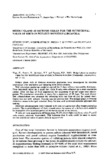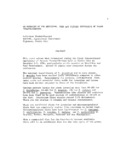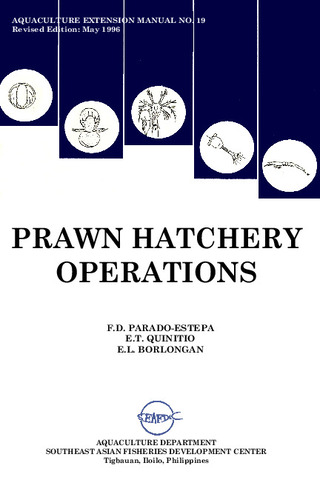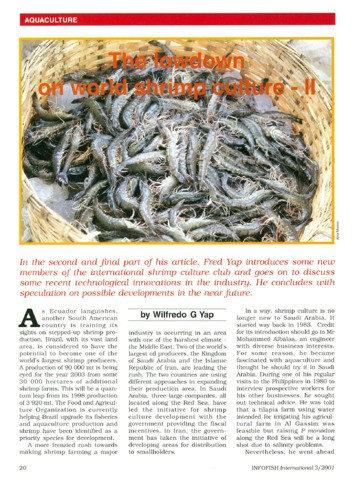Midgut gland as monitor organ for the nutritional value of diets in Penaeus monodon (Decapoda)
Share
Abstract
Midgut gland cells of Penaeus monodon postlarvae were investigated by electron microscopy after starvation and refeeding with different diets.
Well nourished postlarvae could be starved for 5 days without irreversible detriment. They recovered easily on a good diet. Only R cells were affected by a short starvation period. After 13 days of food deprivation the structures of all cell types were disintegrated. The postlarvae were able to starve for a maximum of 15 days. The most diversified ultrastructure was obtained by refeeding with cod liver oil and 2s (mixed diet). Casein was not well utilized. Sucrose was the poorest diet. The midgut gland of Penaeus monodon seems to be lipid oriented. Only fat was used as storage material; glycogen was lacking.
Different ultrastructures were induced in R cells by a given diet after longer starvation periods. The reestablishment of their ultrastructure by means of a definite diet seems to be impossible after a certain period of starvation (point of no return).
R cells are very sensitive to different diets. B cells show slight reactions, while F and E cells remain relatively unchanged. This indicates that R cells could be used to monitor the nutritional value of prawn diets in aquaculture.
Description
Contribution No. 152 of the Aquaculture Department, SEAFDEC.
Suggested Citation
Vogt, G., Storch, V., Quinitio, E. T., & Pascual, F. P. (1985). Midgut gland as monitor organ for the nutritional value of diets in Penaeus monodon (Decapoda). Aquaculture , 48(1), 1-12. https://doi.org/10.1016/0044-8486(85)90047-X
Subject
Taxonomic term
Collections
- AQD Journal Articles [1248]
Related items
Showing items related by title, author, creator and subject.
-
An overview of the nutrition, feed and feeding techniques of prawn penaeid/shrimps
Piedad-Pascual, Felicitas (Philippine Council for Aquatic and Marine Research and Development, 1989)This paper echoes what transpired during the first International Conference of Penaeid Prawns/Shrimps held in Iloilo City in December 4-7, 1984, particularly on the Nutrition nd Feed Development. Around 25 papers were ... -
Prawn hatchery operations
Parado-Estepa, Fe D.; Quinitio, Emilia T.; Borlongan, Emeterio L. (Aquaculture Department, Southeast Asian Fisheries Development Center, 1996-05)The manual, an updated version of the 1984 SEAFDEC/AQD manual, presents the underlying principles and step-by-step instructions of prawn larval and post-larval rearing. The techniques described are not only applicable to ... -
The lowdown on world shrimp culture - II
Yap, Wilfredo G. (INFOFISH, 2001)This paper introduces some new members of the international shrimp culture club and goes on to discuss some recent technological innovations in the industry, particularly the polyculture of tilapia (mainly Oreochromis ...




